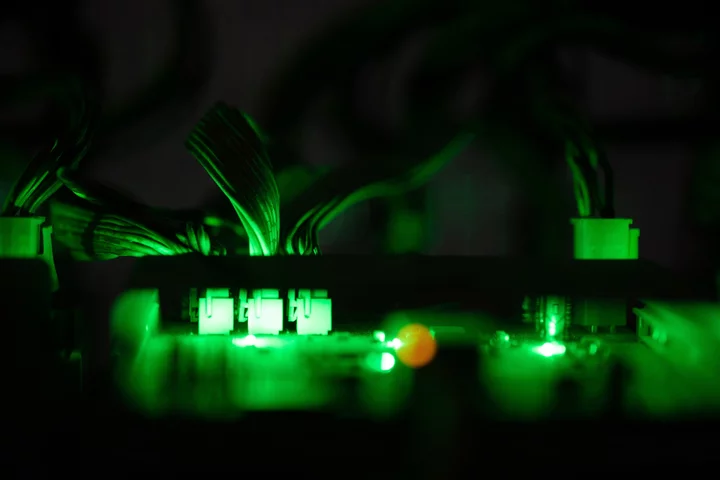
Nvidia-Backed CoreWeave Seeks Stake Sale at Up to $8 Billion Valuation
CoreWeave, a cloud computing provider that’s becoming one of the hottest startups in the artificial intelligence race, is
1970-01-01 08:00
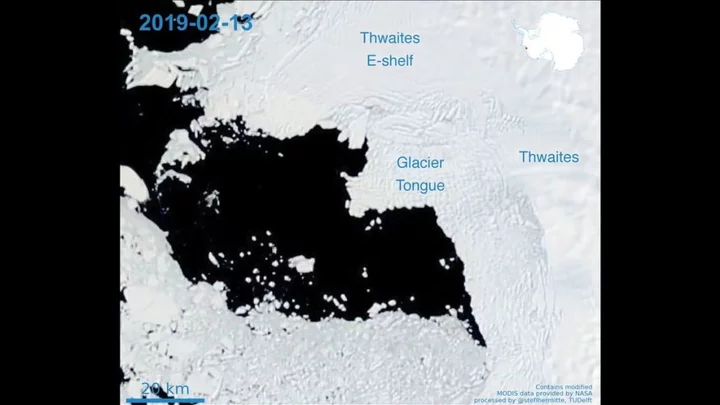
Scientists troubled by 'doomsday glacier' discovery
Scientists have been left shocked and worried by a recent discovery made beneath the Thwaites Glacier in Antarctica, otherwise known as the 'doomsday glacier.' The huge amount of ice has been destablised and has been reduced by nearly nine miles since the 1990s. It is believed to hold a large amount of water, that if it were to completely melt would raise sea levels by more than 2 feet around the globe and could unleash more water if neighbouring glaciers are disturbed. Now, new research carried out at the location in West Antarctica that deeper cracks are beginning to form on the shelf of the glacier potentially compromising its intergrity, as published in a study on the science journal Nature. Scientists used a robot named 'Icefin' to bore 2000 ft down below the glacier's surface to get a better look at what is going on beneath it by taking photos and videos as well as collecting valuable pieces of data about temperature and sea levels. What they found wasn't very reassuring. Although the rate of the melting wasn't as fast as they had originally feared the researched still painted a "very nuanced and complex picture." Speaking to CNN, lead researcher Peter Davis said: "The glacier is still in trouble. What we have found is that despite small amounts of melting there is still rapid glacier retreat, so it seems that it doesn’t take a lot to push the glacier out of balance." However, it wasn't all doom and gloom as robot creator and scientist Britney Schmidt of Cornell University, revealed that signs of life had been found on the glacier. She said: "To accidentally find them here in this environment was really, really cool. We were so tired that you kind of wonder like, ‘am I really seeing what I’m seeing?'. "You know because there are these little creepy alien guys (the anemones) hanging out on the ice-ocean interface. In the background is like all these sparkling stars that are like rocks and sediment and things that were picked up from the glacier. And then the anemones. It’s really kind of a wild experience." That being said, Oregon State University ice researcher Erin Pettit, who didn't work on the study believes that the findings are a cause for concern. She told Associated Press: "Thwaites is a rapidly changing system, much more rapidly changing than when we started this work five years ago and even since we were in the field three years ago. I am definitely expecting the rapid change to continue and accelerate over the next few years." Have your say in our news democracy. Click the upvote icon at the top of the page to help raise this article through the indy100 rankings.
1970-01-01 08:00
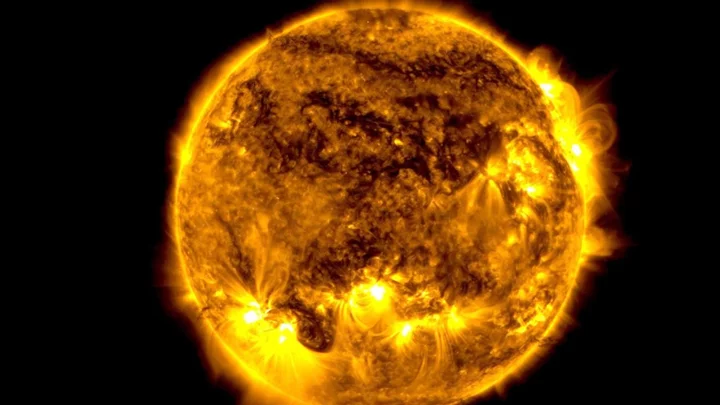
Part of the sun is broken and scientists are baffled
We don’t want to alarm anyone, but the sun is broken. A section of the sun has left the surface and begun circulating around the top of the star as if it were a huge polar vortex, and it’s not exactly clear why it’s happened. The observation was made possible thanks to the James Webb Space Telescope, and its no surprise that it piqued the interests of scientists everywhere. Tamitha Skov is a space weather physicist who regularly shares updates on social media, and she seemed incredibly excited about the latest developments. Sign up for our free Indy100 weekly newsletter “Talk about Polar Vortex! Material from a northern prominence just broke away from the main filament & is now circulating in a massive polar vortex around the north pole of our Star,” she wrote. “Implications for understanding the Sun's atmospheric dynamics above 55° here cannot be overstated!” Solar prominences consist of hydrogen and helium, and they extrude from the sun’s service releasing plasma. While there’s confusion around the cause of the phenomenon, it could be related to the reversal of the sun’s magnetic field, as well as the fact that something expected has been known to happen when the sun reaches a 55 degree latitude in every 11-year solar cycle. Solar physicist Scott McIntosh, who is the deputy director at the National Center for Atmospheric Research in Boulder, Colorado told Space.com: "Once every solar cycle, it forms at the 55 degree latitude and it starts to march up to the solar poles. “It's very curious. There is a big 'why' question around it. Why does it only move toward the pole one time and then disappears and then comes back, magically, three or four years later in exactly the same region?" Have your say in our news democracy. Click the upvote icon at the top of the page to help raise this article through the indy100 rankings.
1970-01-01 08:00

CNN Names Former New York Times Head Mark Thompson Next CEO
Warner Bros. Discovery Inc. has named Mark Thompson as the chief executive officer of CNN, bringing in the
1970-01-01 08:00

Gabon coup: Simple guide to what's happening
President Ali Bongo is under house arrest after being ousted by the army after a disputed election.
1970-01-01 08:00

Scientists think there might be life hidden in underground caves on Mars
Scientists have theorised that if we are going to find life on Mars, it will be microbes and they will be living in caves below the surface. The Perseverance rover, NASA’s exploration robot on the Red Planet, is currently searching for signs of ancient life in the Jezero Crater. Scientists already know that there are so-called lava tubes on Mars, which some think could be large enough to shelter the first human astronauts from the cosmic radiation which is bombarding the planet. When these were formed, they thought conditions on Mars were more similar to those on Earth, with flowing water, an atmosphere and a warmer climate. One theory is that as conditions changed on the surface and Mars lost its magnetic field and atmosphere, life could have shifted underground. Daniel Viúdez-Moreiras from Spain’s National Institute for Aerospace Technology calculated that UV radiation levels would be about 2 percent of the radiation levels found at the surface. Fortunately, we have lava tubes here on Earth too, which could tell us what life could look like in similar conditions elsewhere in the Solar System. Hawai’i’s Mauna Loa volcano lava tubes were recently explored by NASA. Within them, life is sheltered from conditions on the surface. On Earth, that is a bad thing: we have sunlight and oxygen. But on Mars, where conditions are much harsher, that is a big advantage. “The microbes we found in Hawaii could be similar to microbes that once lived on Mars,” researcher Chloe Fishman explained to NASA following a trip to collect samples in April, “or even microbes that live there today.” The team brought back samples from the cave so as to sequence the genomes of the microbes they found there. And there are already plans to explore lava tubes on the Moon, too. So maybe, just maybe, they will hold the secret to life on Mars. Sign up to our free Indy100 weekly newsletter Have your say in our news democracy. Click the upvote icon at the top of the page to help raise this article through the indy100 rankings.
1970-01-01 08:00
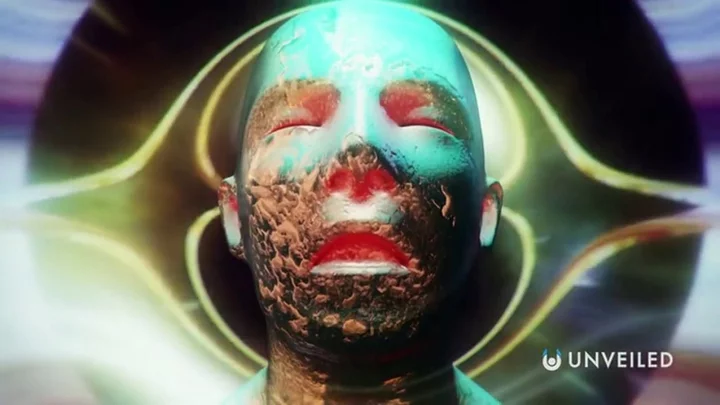
Near-death experience expert says he’s proven there is an afterlife ‘without a doubt’
One of life's unanswered questions that often lies in fear of the unknown is what happens when we die. Now, an American doctor, who has studied over 5,000 near-death experiences, claims there is "without a doubt" life after death. Radiation oncologist Dr Jeffrey Long from Kentucky started his Near-Death Experience Research Foundation back in 1998 and has collected personal recollections from people who have almost faced death. He defined a near-death experience as "someone who is either comatose or clinically dead, without a heartbeat, having a lucid experience where they see, hear, feel emotions, and interact with other beings." After years of "overwhelming" evidence, he has concluded: "There’s certainly an afterlife." Dr Long revealed in an essay for Insider that roughly 45 per cent suggested that "their consciousness separates from their physical body, usually hovering above," during their NDE. One account from a woman who fell unconscious while riding a horse told the doctor that "her consciousness travelled with her horse as he galloped back to the barn." When she woke up, she was able to "describe exactly what happened at the barn." Many others went on to claim that they felt as though they were "transported into another realm," where they saw a bright light and were greeted by deceased loved ones. Even children have described similar experiences. Dr Long candidly said he hasn't found any scientific explanations behind the experiences, adding: "I’ve read brain research and considered every possible explanation for NDEs. The bottom line is that none of them hold water." Previously, in a short film for BBC Ideas, Dr Kathryn Mannix, who specialises in palliative and end-of-life care suggested: "Dying is probably not as bad as you're expecting." She went on to compare death to "a process" and believes society should be open to the conversation about death and change how we speak about it. Sign up for our free Indy100 weekly newsletter Have your say in our news democracy. Click the upvote icon at the top of the page to help raise this article through the indy100 rankings.
1970-01-01 08:00

Super Typhoon Lashes Taiwan Before Heading to Hong Kong
Super Typhoon Saola pummeled the south of Taiwan early Wednesday with strong winds and heavy rain, shutting offices
1970-01-01 08:00

Swiss SEBA Bank gets approval-in-principle for Hong Kong crypto services
By Georgina Lee HONG KONG Swiss crypto-focused SEBA Bank on Wednesday said it has received an approval-in-principle from
1970-01-01 08:00

CNN Reportedly Poised to Pick Mark Thompson as Next CEO
Mark Thompson, the former chief executive officer of The New York Times Co., is set to take up
1970-01-01 08:00

OpenAI Nears $1 Billion of Annual Sales as ChatGPT Takes Off
OpenAI is on track for $1 billion of annual revenue as businesses adopt the technology behind ChatGPT, the
1970-01-01 08:00
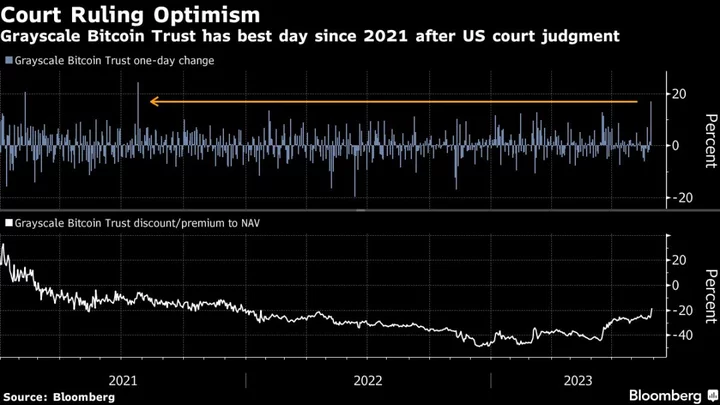
The World’s Biggest Bitcoin Fund Posts Best Day in Two Years on Court Ruling
The $17.4 billion Grayscale Bitcoin Trust rallied the most since July 2021 after a US court ruling potentially
1970-01-01 08:00
